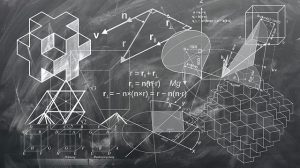10.6 Taking Action – Strategies for Math Tests
Action
Math tests require some special strategies because they are often problem based rather than question based.
Do the following before the test:
- Attend all classes and complete all assignments. Pay special attention to working on all assigned problems. After reviewing problems in class, take careful notes about what you did incorrectly. Repeat the problem and do a similar one as soon as possible. It is important that the last solution to a problem in your mind is a correct solution.

Photo by Gerd Altmann, Pixabay License - Think about how each problem solution might be applied in a real-world situation. This helps make even the most complex solutions relevant and easier to learn.
- In your study group, take turns presenting solutions to problems and observing and correcting everyone’s work.
- If you are having difficulty with a concept, get help right away. Check the resource list at the end of this chapter to identify where you can get help.
- Remember that math especially builds new material on previous material, so if you are having trouble with a concept now, you are likely to have trouble going forward.
- Make an appointment with your professor. Don’t be shy about asking for a tutor—tutoring is not just for students needing remedial help; many successful students seek them out, too.
Do the following during the test:
Review the entire test before you start and work the problems you feel most confident with first.
Approach each problem following three distinct steps:
1. Read the problem through twice: the first time to get the full concept of the question, and the second time to draw out pertinent information.
- After you read through the problem the first time, ask yourself, “What is this problem about?” and “What is the answer likely to look like?”
- The second time through, consider these questions: “What facts do I have available?” “What do I know?” “What measurable units must the answer be in?” Think about the operations and formulas you will need to use. Try to estimate a ballpark answer.
2. Compute your answer
- First, eliminate as many unknowns as possible. You may need to use a separate formula for each unknown. Use algebraic formulas as far as you can before plugging in actual numbers; that will make it easier to cancel and combine factors. Remember that you may need two or more tries before you come up with the answer.
3. Check your work.
- Start by comparing your actual answer to the estimate you made when you first read the problem. Does your final answer sound likely? Check your arithmetic by opposite operations: use multiplication to check division and addition to check subtraction, and so on. You should consider using these three steps whenever you are working with any math problems, not just when you get problems on tests.
“16 Tests” from A Guide for Successful Students by Irene Stewart and Aaron Maisonville is licensed under a Creative Commons Attribution-NonCommercial-ShareAlike 4.0 International License, except where otherwise noted.

